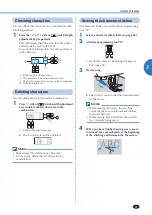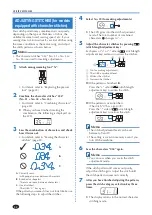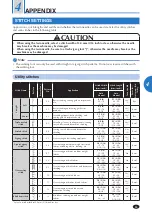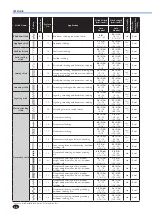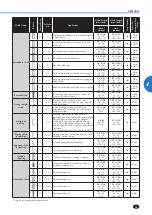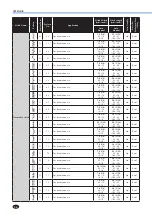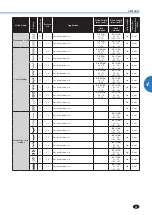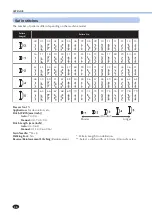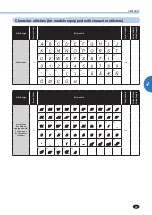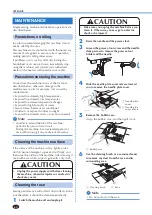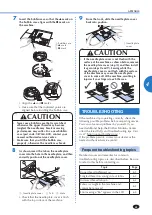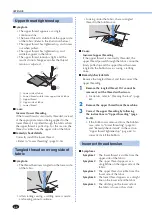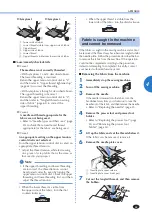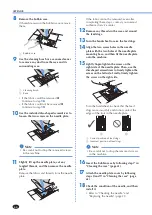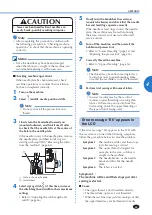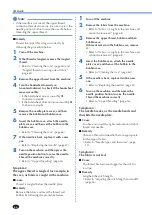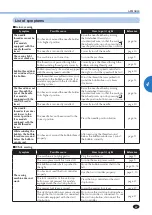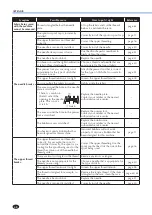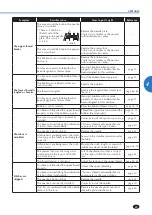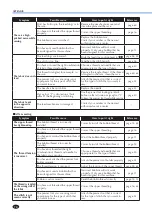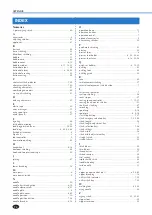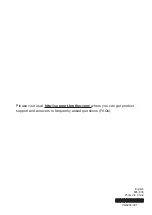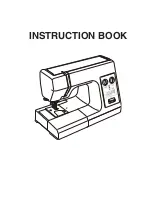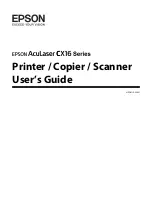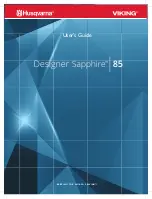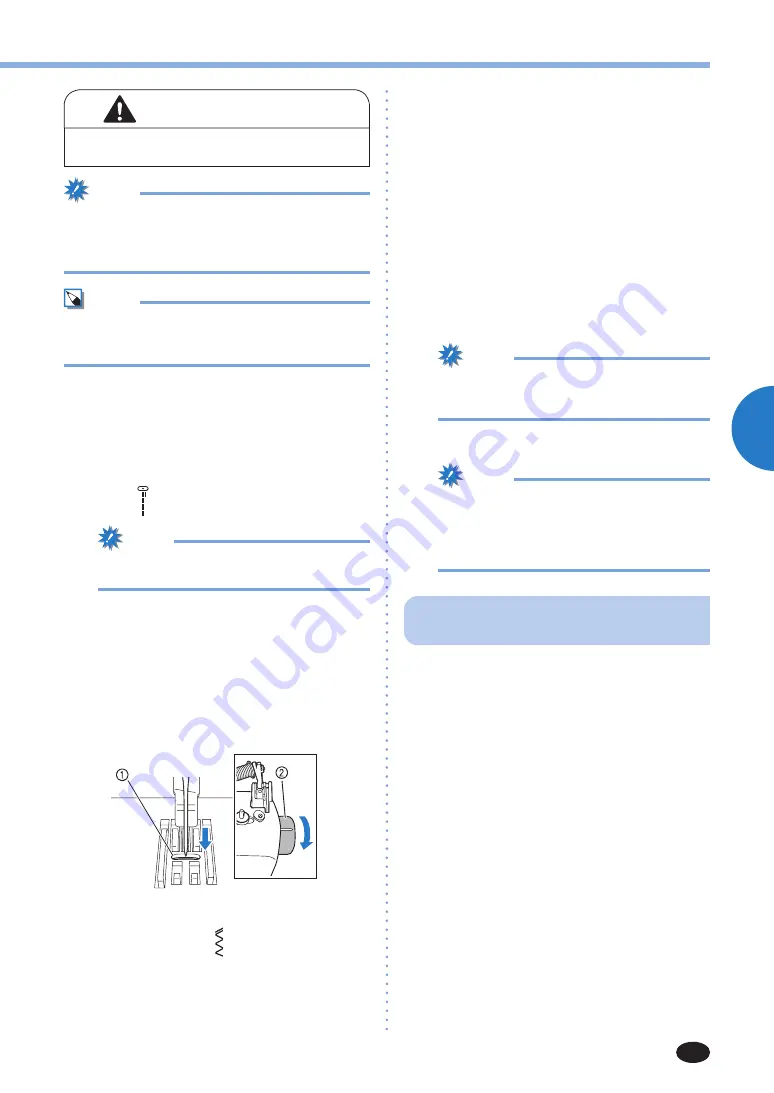
APPENDIX
65
4
CAUTION
• Never use bent needles. Bent needles can
easily break, possibly resulting in injuries.
Note
• After completing this procedure, continue with
the following procedure in “Checking machine
operations” to check that the machine is operating
correctly.
Memo
• Since the needle may have been damaged
when the fabric was caught in the machine, we
recommend replacing it with a new one.
■
Checking machine operations
If the needle plate has been removed, check
machine operations to confirm that installation
has been completed correctly.
1
Turn on the machine.
2
Select (middle needle position stitch).
Note
• Do not yet install the presser foot and
thread.
3
Slowly turn the handwheel toward you
(counterclockwise), and look from all sides
to check that the needle falls at the center of
the hole in the needle plate.
If the needle contacts the needle plate, remove
the needle plate, and then install it again,
starting with step
13
in “Removing the fabric
from the machine” (page 64).
1
Hole in the needle plate
2
Handwheel
4
Select zigzag stitch . At this time, increase
the stitch length and width to their maximum
settings.
• Refer to “Adjusting the stitch length and
width” (page 26).
5
Slowly turn the handwheel toward you
(counterclockwise) and check that the needle
bar and feed dogs operate correctly.
If the needle or feed dogs contact the needle
plate, the machine may be malfunctioning;
therefore, contact your nearest authorized
service center.
6
Turn off the machine, and then install the
bobbin and presser foot.
• Refer to “Lower threading” (page 14) and
“Replacing the presser foot” (page 23).
7
Correctly thread the machine.
• Refer to “Upper threading” (page 16).
Note
• The thread may have become tangled as a
result of incorrect upper threading. Make
sure that the machine is correctly threaded.
8
Perform trial sewing with normal fabric.
Note
• Incorrect sewing may be the result of
incorrect upper threading or sewing thin
fabrics. If there are poor results from the
trial sewing, check the upper threading or
the type of fabric being used.
Error message “E6” appears in
the LCD
If the error message “E6” appears in the LCD with
the occurrence of one of the following symptoms,
follow the procedure below to solve the problem.
Symptom 1 : The machine rattles and then stops
just after sewing is started.
Symptom 2 : The upper thread is tangled, for
example, in the race, or fabric is
caught in the machine.
Symptom 3 : The needle breaks, or the needle
bends and thus hits the needle
plate.
Symptom 4 : The fabric is not fed.
Symptom 1 :
The machine rattles and then stops just after
sewing is started.
■
Cause
• The upper thread is not threaded correctly.
• The thread take-up lever is not threaded.
* When the machine stops just after sewing is started,
the upper thread may not be threaded correctly.

